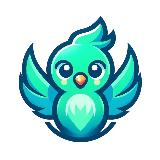
3D character design - Bringing Imagination to life.
- Views 522
- Sales 1
Explore the marketplace!
What you get with this Offer
Once the concept has been developed, the 3D modeling process begins, typically using software such as Maya or Max. This involves creating a digital wireframe of the character or model, and then adding detail and definition to the model by adding polygons, or the building blocks of 3D models. This process involves a great deal of skill and attention to detail, as the model must be able to move, bend and deform in realistic ways.
After the modeling is done, the character or model goes through a texturing process which gives the model a realistic or stylized look by adding patterns, colors, and other details. Then, rigging and animation process is done, which gives the 3D model the ability to move and perform actions. After that, the character or model is exported for use in the target application, be it a video game engine, animation software, or 3D printer.
Finally, the 3D character or model is rendered using a program like KeyShot, which produces the final image or animation that is seen by the audience. This process requires a good understanding of lighting and shading to achieve the desired look and feel for the final product.
Creating 3D characters or models is a multi-step process that requires a high level of skill and attention to detail, but the end result can be incredibly satisfying and impactful, whether it's being used in a game, film or a 3D printed object.
What the Freelancer needs to start the work
To get started on creating a 3D character, you should provide the following information:
Concept art or reference images:
This could be sketches, drawings, or even photographs that show the desired look of the character, including its clothing, accessories, and other elements that will be included.
Character specifications:
This includes information such as the desired polygon count, resolution, and file format of the final model.
Rigging and animation requirements:
If the character will be used for animation, the buyer should provide information about the types of movements and actions that the character will need to perform.
Lighting and shading requirements:
If the character will be used in a specific game engine, animation software, or for 3D printing the buyer should provide information about the desired lighting and shading style.






